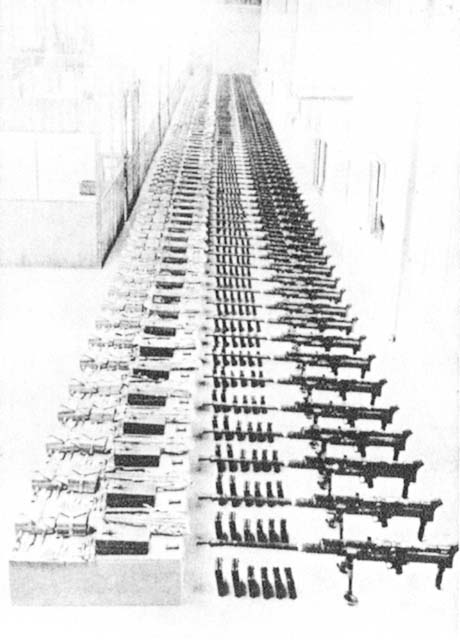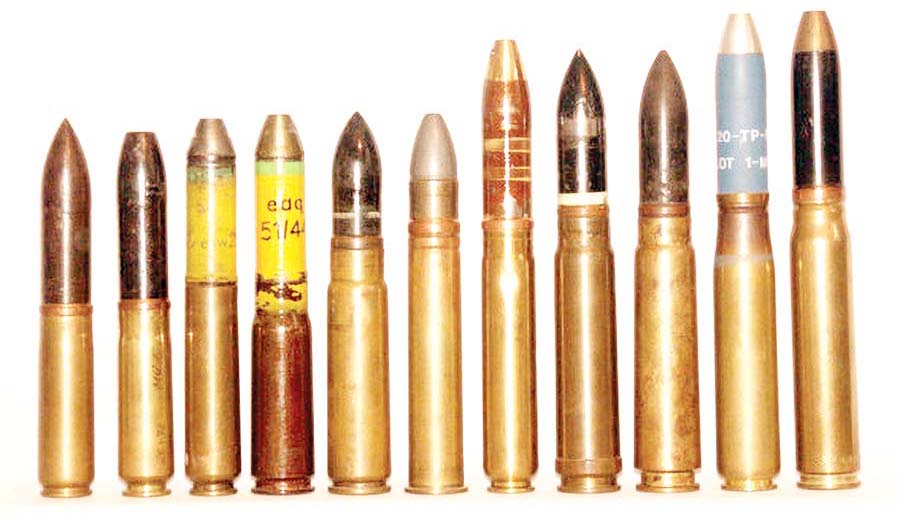By Tom Murphy, Solothurn History
In World War I, tanks first appeared at the Battle of Flers-Courcelette in September 1916. It was the first time tanks had been used in a military conflict. The British tanks were quite slow; seldom able to meet their top speed of five miles per hour. However, the British Army’s officer corps was dominated by people from existing cavalry regiments who despised the new devices and stubbornly clung to their horses despite the fact that horses and deep mud versus German machine guns was a losing proposition.
As the tank took on a bigger role on the Western Front, it became obvious that some sort of tank-killing system was needed. Early in the War, artillery proved effective in destroying tanks, and to a lesser extent, so did land mines and the trench system so prevalent during the War. The first tanks had side armor 5/16-inch thick which made them immune to small arms fire, but with the development of the German 7.92x57mm K bullet with its tool-steel core, the British armor could be penetrated on an average one out of three shots. By the Battle of Messines Ridge in June 1917, heavier armor was in use.
The emergence of armor-plated vehicles and tanks forced armament companies to design man-portable, anti-tank weapons. Initially, the German Army employed a single-shot Mauser, the 13.2mm 1918 T-Gewehr, to destroy armored vehicles. It was the only anti-tank rifle to see service in WWI.
After the end of the War, a small Swiss arms company, Solothurn Waffenfabrik AG, named after the Solothurn Canton in northwestern Switzerland, began manufacturing weapons. In the late 1920s, it was purchased by Germany’s Rheinmetall Borsig AG to use as a manufacturing plant for military arms. The Treaty of Versailles was signed June 28, 1919, in Versailles, France, ending the state of war between Germany and the Allied Powers. Germany was prohibited from the arms trade, limits were imposed on the type and quantity of weapons and tanks, and armored cars and military aircraft were forbidden. By merging with Solothurn, Rheinmetall AG could use their engineers to invent and manufacture weapons of war outside of Germany.


Solothurn’s Small Arms
Solothurn developed a number of innovative small arms, ranging from submachine guns to anti-tank rifles that were more cannon than rifle. The first anti-tank, anti-materiel rifle was the Solothurn S18-100, initially deployed in the early 1930s. It was a semiautomatic rifle that used recoil to cycle the action. It could be carried by a single infantryman, but with an empty weight of just over 88 pounds, it could not be fired off-hand.
It was a bullpup configuration with the magazine and action behind the pistol grip/trigger assembly. This setup reduced overall length and weight while not sacrificing barrel length and the resultant loss of velocity. The 36.6-inch barrel is capped by a muzzle brake to aid in control of the massive recoil. The buttstock has a thick pad to help disperse the mind-numbing kick. Two hinged bipods helped support the rifle when it was deployed on the ground–one on the front of the barrel shroud, one under the aft end of the buttstock. The rifle was fed horizontally from the left using either a five-round magazine on the S18-100 or a five- or 10-round magazine on the S18-1000. The spent cases were ejected from the right side of the receiver. Iron sights were fitted, but provisions were made to use a 2.5x telescopic sight.
The Solothurn S18-100B was in use by Hungary, Italy and Switzerland by 1934. The weapon saw service with the armed forces of Bulgaria, Mexico and the Netherlands. By the onset of WWII, the German Army had a large number of S18-100B rifles in their arsenal. The Finnish Army obtained some S18-100 guns by way of the Swiss; however, they arrived too late for use in the conflict known as the Winter War (November 1939 to March 1940) but saw service in the Continuation War (June 1941 to September 1944). Due to the improvement in armor, the S18-100 didn’t see much use in the fighting and was withdrawn when the improved S18-1000 was introduced. This upgraded rifle used the more-powerful 20x138mm cartridge. Towards the end of the War, the S18-1000 was upgraded to the S18-1100, capable of firing in full-automatic mode.
The S18-1100 as a selective-fire 20mm rifle had tremendous recoil. Its 6 foot, 11-inch length and weight in excess of 121 pounds made it too difficult to be transported by infantry, so a two-wheel trailer was provided. Once in position, the rifle could be fired from the trailer, mounted on its bipods or set up on a high-angle, three-legged mount to act as an anti-aircraft weapon. Its rate of fire varied between 15 and 20 rounds per minute. Muzzle velocity was 2,500 feet per second, and in anti-tank mode it could reach out to 1,500 yards and still penetrate over one-half inch of armor (see sidebar for more information on ammunition). However, the advancement in tank warfare and the arrival of man-portable, armor-piercing rockets rendered the S18 series of rifles obsolete.
Ammunition
20x105B
This cartridge was developed in the interwar years by Solothurn, a Swiss company closely associated with Rheinmetall (Germany being banned from developing certain armaments by the Treaty of Versailles). As it is the smaller of the two 20mm rounds developed by Solothurn, it is commonly known as the “Short Solothurn.” It was developed in conjunction with the Lb 204 aircraft cannon, which saw little if any use but saw service by various armies in the Solothurn S18-100 series anti-tank rifles. It is therefore generally found loaded with AP projectiles, of which there are various types. Rather bizarrely, one variant (the S18-350) was used as an aircraft gun by the Dutch Air Force, despite offering only semiautomatic fire.
20x138B
The 20x138mmB cartridge (Solothurn Long) was the second of the 20mm cannon cartridges developed by Solothurn in the 1930s and is known as the “Long Solothurn” round. It proved far more successful than the 20x105B, being primarily used in the highly successful FlaK 30 and 38 AA guns which were extensively used by German forces in WWII (and remained in service in some nations for decades after the War). It was also used in the KwK 30 L/55 and 38 light AFV guns and in the Solothurn S18-1000 series anti-tank rifles.
As well as being used in these German and Swiss weapons, it was used in the Finnish Lahti L-39 anti-tank rifle and L-40 AA gun and in the Italian Breda M35 and Scotti cannon. A very wide range of ammunition was developed for this gun, including M-Geschoss (mine shell) and Pzgr 40 tungsten-cored AP.

SPECIFICATIONS
| Solothurn | S18-100 | S18-1000 |
|---|---|---|
| Action | Semiauto | Semiauto |
| Caliber | 20x105B | 20x138B |
| Weight empty | 88lb | 114lb |
| Length | 69.3in | 85.4in |
| Barrel length | 36.6in | 57in |
| Magazine capacity | 10 rounds | 5 or 10 rounds |
| Armor penetration | 1.4in | 1.6in |
| This article first appeared in Small Arms Review V23N8 (Oct 2019) |











